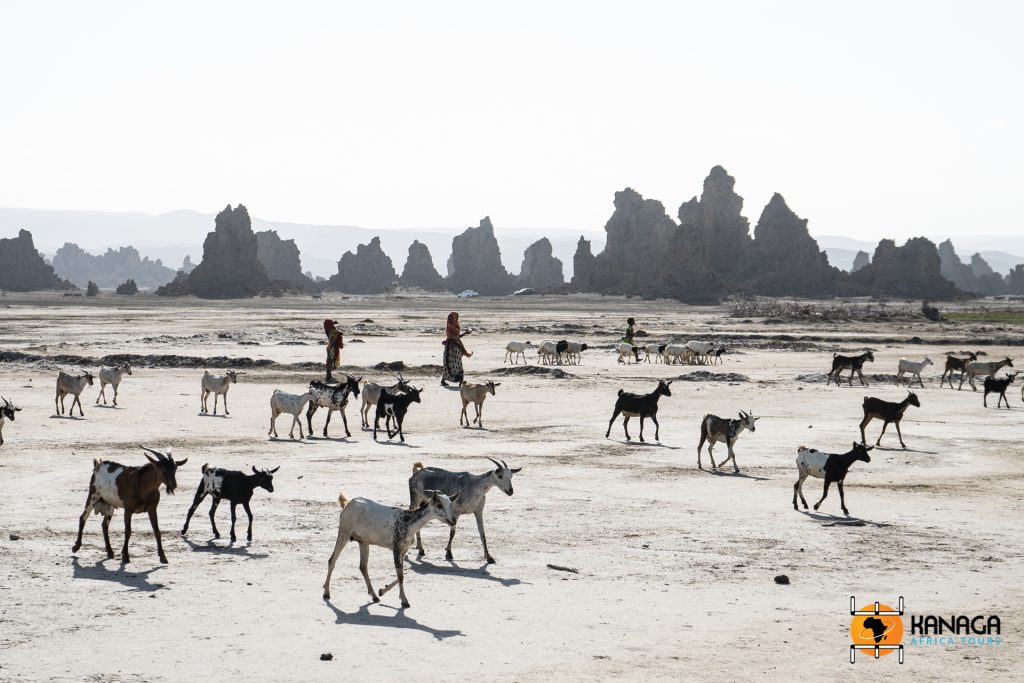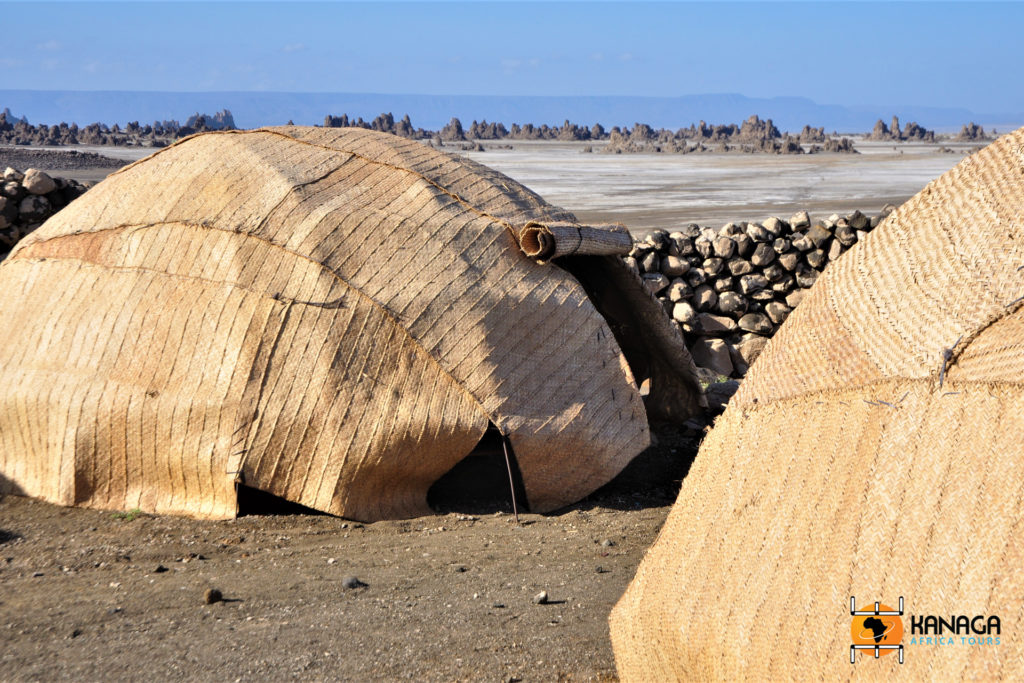© S. Alfonsetti
On the border between the state of Djibouti and Ethiopia, in the heart of a depression in the region known as the ‘Afar Triangle’, the Abbé Salt Lake lies. The encounter of three moving tectonic plates, the region is one of the most interesting geological and anthropological areas in the whole of Africa.
Lake Abbé is a saltwater lake, a hypersaline lake where water containing mineral salts enters but with no outflow and pure water evaporates from the surface. It is surrounded by a lunar landscape of salt desert and reached through the vast expanses of white clay of Petit Barra and Grand Barra. One of the environmental wonders of this tiny, undiscovered state, it offers a morphological and geological variety, made up of highly concentrated saline water, spires and pinnacles of limestone sediments in surreal shapes, chalk deposits of unreal colours, surrounded by sulphurous springs, and the spectacle of a myriad of pink flamingos gathering at dawn. On the north-western shore rises Dama Ali (1069 metres), an inactive volcano, while along the south-western and southern coasts lie vast salt pans, some 10 km wide. Recent droughts and the extraction of water for irrigation from the Awash River, which flows into the lake, have caused the water level to drop. The Afar people have established a settlement near the lake shore.







